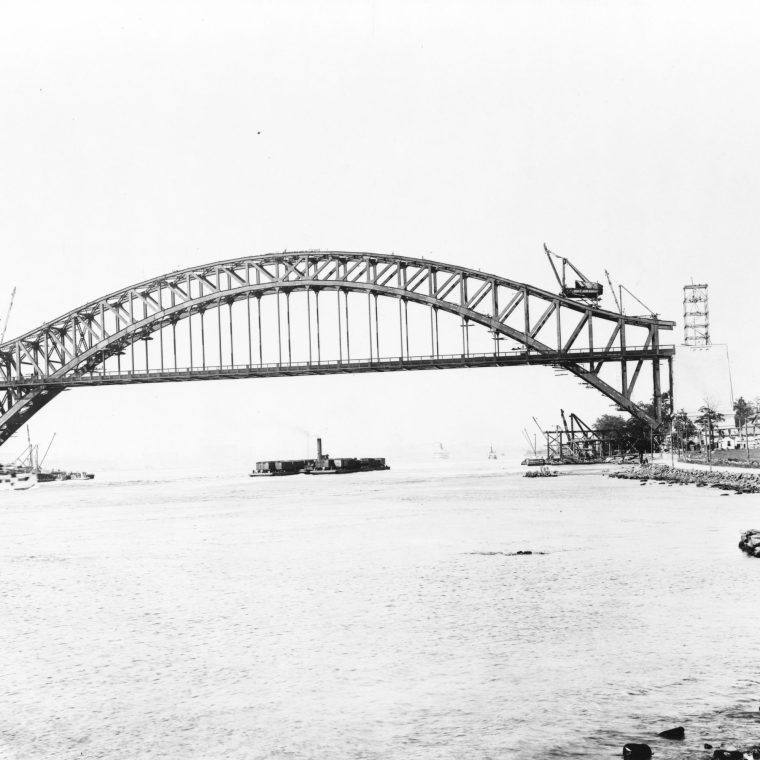Because Hell Gate is a rail-only bridge, it is less well known than it deserves to be. It is the centerpiece of the New York Connecting Railroad, which brings lines from the northeast (the old New Haven Railroad) into Penn Station via Queens. I wrote about the bridge and that connection at length here, not realizing that I’d be writing this series one day.
As I mentioned in the old post, there is an oddity to the bridge’s design. The upper arch chord is not part of the arch action of the arch, but rather serves as local stiffening. The decorative concrete towers at the ends make it hard to see today, but it’s pretty obvious in the construction photo above, before the upper halves of the towers were built. There’s simply nowhere for thrust in that upper chord to go. The bridge was designed for some heavy loading – a full coal train on each of its four tracks simultaneously for max weight, two such trains on two adjacent side tracks for deck torsion – so stiffening the lower arched chord was a critical design element.
Hell Gate is a nasty stretch of water to navigate: the East River (a tidal strait) takes a right-angle bend there, the Harlem River (another tidal strait) joins in at the outer corner of the bend, there are two large islands (Ward’s and Randall’s, now joined), and there were for a long time a whole lot of reefs of various types. It was also, in the 1910s when the bridge was constructed, fairly busy with shipping. So how do you build that 1000-foot arch? Joseph Pennell was nice enough to draw the process for us.

At each side there’s a temporary back-arm sitting on the concrete tower base (and presumably anchored off to the right, out of frame) attached to a temporary top tension chord. That allows the halves to be constructed as cantilevers. Pennell was an artist, but his draftsmanship is beautifully detailed: compare the traveling crane on the top chord in his drawing and the photo at the top of the page.
Here’s a long shot of the bridge and the NYCRR in 1991, from Queens looking west. The elevated highway just past the bridge is the central link of the Triboro Bridge, the white high-rises are a hospital on Ward’s Island, the low buildings to the right of the bridge are a sewage treatment plant on Randall’s Island. The buildings past the hospital are in Manhattan, on the other side of Little Hell Gate, which is the southern extension of the Harlem River.





You must be logged in to post a comment.